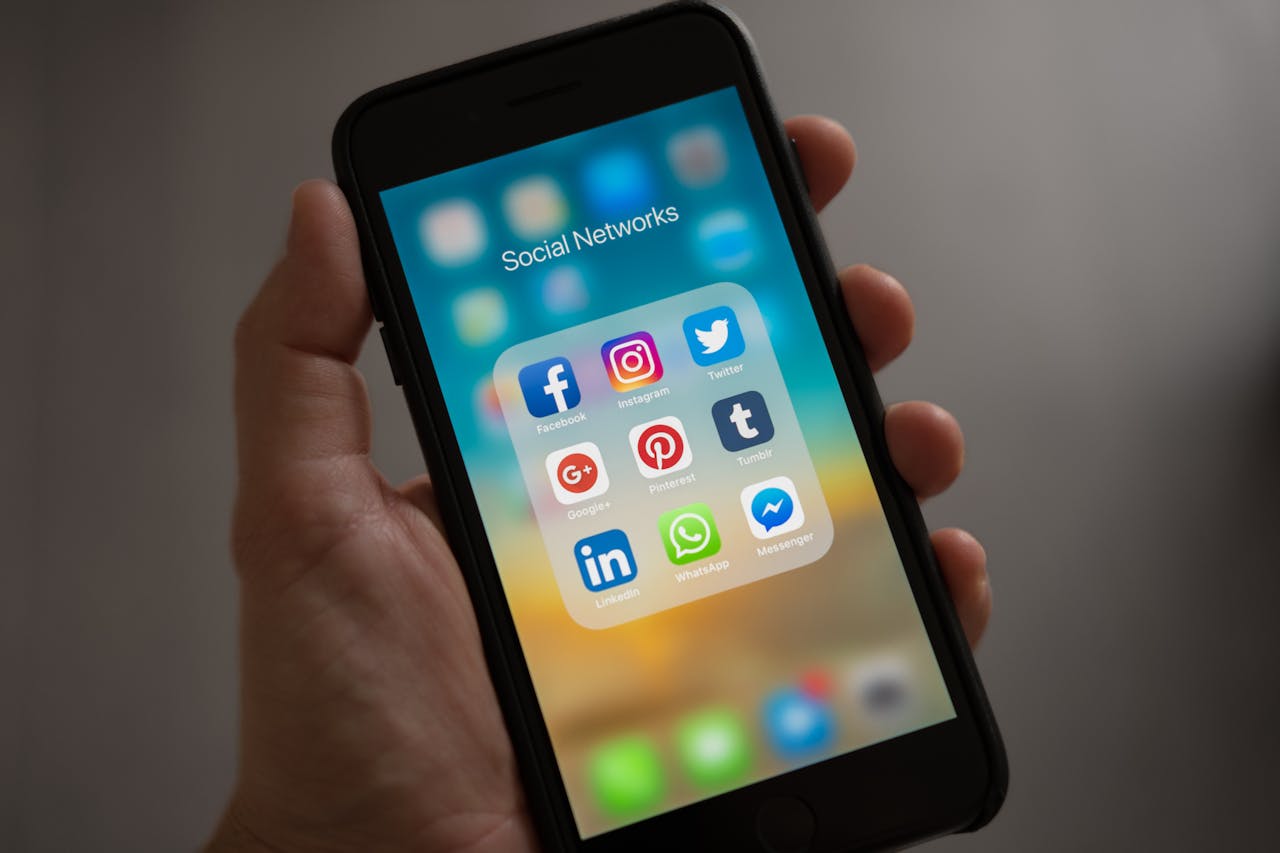As the 2020s tick onward, VoIP, or Voice over Internet Protocol, is becoming more and more important for all telecommunications consumers, including individuals, businesses and non-profit organisations.
That’s partly because the UK’s copper landline system, known as the public switched telephone network (PSTN), is slowly degrading with time. By 2027, it will be almost entirely terminated – and consumers will be switched to using VoIP instead.
That might sound like a huge technological leap forward. And in a way, it is. VoIP doesn’t rely on physical phone lines, and it has a number of benefits for organisations and businesses.
At the same time, though, VoIP is not as new or unfamiliar as it might seem. In fact, many apps that have been widely used for years also rely on VoIP technology.
Why is VoIP so popular? Read on to explore what VoIP is, why it’s so handy, and how it’s used in some VoIP examples you might already know.
What is VoIP?
If VoIP doesn’t send phone calls through physical landlines, what does it use?
The answer is the internet. When you speak to someone through VoIP, the sound of your voice becomes audio data. Then, just like any other kind of data, it’s sent through an internet connection to its destination – the person you’re speaking to.
So, if you’ve ever used an app on your phone or laptop that lets you speak to someone without using a phone line, it’s likely that you’ve already used VoIP.
Curious to know if your favourite app uses VoIP? We explore some VoIP examples below.
1. WhatsApp
Owned by Meta, WhatsApp is a highly popular app for instant messaging, voice calling and video calling. In 2020, WhatsApp announced it had an astonishing 2 billion users.
Like many VoIP examples on our list, WhatsApp blends VoIP and non-VoIP functions seamlessly. That’s one element that’s made it so easy to use.
The instant messaging aspect of WhatsApp is, of course, not VoIP. But users can simply press a phone icon to call the person they’ve been chatting with – and this is VoIP. The user making the call might feel just like they’re making a phone call through their mobile phone network, but in fact they’re calling through the internet.
Established in 2009, WhatsApp initially charged some subscription fees. However, since 2016, the app has been free to use.
2. Various Google calling and chat services
Over the years, Google has implemented quite a number of ways to chat with friends and colleagues. Some of these are interesting VoIP examples.
Google Voice might be the most obvious case of VoIP usage. It is a tool that allows you to sign up for a phone number associated with your Google account.
This can be very handy for people who want a second phone line or number, such as for their business, but don’t want to pay for another mobile phone connection. Like other forms of VoIP, it’s also useful because it lets users make phone calls through their laptops or without a phone connection at all.
Google Meet is another Google service that currently allows users to make audio calls, and it also uses a type of VoIP.
Increasingly, Google seems to be integrating its VoIP functionalities with other apps, such as Gmail. This is just one way in which VoIP allows different types of communication to work together in sync. Users can email someone, follow up with a chat message, and then have a quick phone call, often using the same app.
3. Skype
Skype is a little older than WhatsApp, having begun life in 2003. It’s an app that was primarily known for its video calling functions, but it also allows audio calls through VoIP as well as instant messaging. It’s now owned by Microsoft, like our next VoIP example…
4. Microsoft Teams
Microsoft Teams, part of Microsoft 365, is a business behemoth that uses VoIP as a part of its services.
As we saw with Google, Microsoft is increasingly integrating different comms functionalities into one app or bundle of apps. Through Teams, users can store files, send instant messages, hold video calls, and make audio calls through VoIP. It all adds up to greater convenience for the user. If a user is messaging a colleague through Teams for the first time, there’s no need to look up a phone extension to call them. They can simply click on the telephone icon through the Teams app to make a VoIP call.
5. Facetime
Facetime is an Apple app best known for video chatting, as its name suggests – it lets you chat face to face. That being said, it does also allow audio chatting through VoIP.
6. Facebook Messenger
Like many other apps on this list, Facebook Messenger was not originally designed as a VoIP app for voice calls. It was primarily an instant messaging app. However, also like other apps we’ve mentioned, it expanded into voice and video calls.
7. Vonage
So far, we’ve discussed a lot of apps that blend aspects like instant messaging, video calling and VoIP together. Vonage is a little different. It’s a telecoms provider centrally focused on offering VoIP phone calling for the home.
Founded in 1998, Vonage was one of the earlier providers of VoIP calls on the market.
Why do so many apps rely on VoIP?
As we can see from these VoIP examples, this technology makes communication easier in the business world and in people’s personal lives in many ways.
Lowering costs
For one thing, VoIP is great because it takes away the administrative hassle and costs of phone lines, which cost money for businesses and other organisations. With VoIP, companies can simply avoid those costs.
Likewise, individuals who want to make international calls, or other kinds of calls that could be costly, also love VoIP for helping them connect to anyone, anywhere who also has an internet connection. If you’re traveling internationally, you can phone a friend from your hotel room – as long as you have good Wi-Fi – without worrying about roaming charges.
Ease of use
In a business context, VoIP means workers can throw away their old listing of phone extensions, which had to be updated each time a colleague joined the team or left. There are no instances of wrong numbers with VoIP office apps, either. If you have someone’s email address in Teams, you can call them through VoIP.
Interestingly, some personal apps that use VoIP, such as WhatsApp, are tethered to phone numbers, although they do not use phone lines. Others, like VoIP functions through Google, are connected to accounts rather than phone numbers – and this may be the way of the future.
Flexibility and centralisation
Furthermore, VoIP is an asset for apps that are used on multiple devices, such as communications apps that are used for work. If you’re using VoIP to communicate through an app, you can log into that app through your laptop or phone and be reachable through the same contact information. In contrast, if you talk to someone through a phone, they can’t reach you in the same way on your laptop.
This is a huge plus for remote workers. It’s also just easier and natural for anyone who likes to switch from chatting on their laptop to talking on their mobile device.
Getting the most from apps that use VoIP
Many apps that use VoIP will tell you that you don’t need a superfast internet connection to use them. While that can be true, it’s also true that your VoIP call will be clearer and stronger with a better connection.
Organisations that rely on VoIP calling through apps like Microsoft Teams should ensure they have a high-quality internet connection, such as FTTP, or fibre-to-the-premises.
Drawbacks of VoIP
We’ve discussed all the benefits that VoIP can provide in numerous apps that are used every day. However, like all technologies, it does have limitations.
As you might expect, one drawback of VoIP is that it requires an internet connection in order to function. As a result, it may not work during power outages when modems and internet connections go down.
How a managed VoIP system from VS Group can help your business
As you can see, VoIP isn’t a new technology. It’s been around since the 1990s and has been part of many people’s lives since around 2010.
That being said, VoIP services for organisations are growing more and more sophisticated. An externally managed VoIP system can offer users functions we’ve seen like instant messaging and video calling – and it can also provide office-wide functionalities like an automated assistant to direct calls.
Whether you like VoIP for its ease of use, its cost savings, its helpfulness for remote workers, or one of its many other benefits, VS Group is here to provide a high-quality VoIP service for your organisation. If you’d like to learn more about what our externally managed VoIP services can do for you, just give our telecoms experts a call on 0330 094 0170. You can also send us an email at customerservice@vsgcomms.com.





